While the representation of women authors in the western and general fiction pulps was low, it wasn’t all a man’s world. In westerns Eli Colter and Cherry Wilson appeared regularly in Western Story; in general adventure fiction Beatrice Grimshaw (54 appearances in Blue Book); and in detective fiction the names of Mary Roberts Rinehart and Agatha Christie (whose stories appeared in Blue Book) stand out.
But, come to think of it, I can’t really think of any other women authors in Blue Book. Was this a conscious choice? Both Grimshaw and Christie were British authors whose names were known to readers of popular fiction before their first appearances in Blue Book. Grimshaw had appeared in Collier’s, The Saturday Evening Post, Pearson’s Magazine, and Everybody’s Magazine prior to her Blue Book debut in 1921. Agatha Christie had debuted Hercule Poirot in The Mysterious Affair at Styles (1921), two years before her first appearance in Blue Book.
I’m inclined to regard the lack of women authors as a conscious choice, which might explain the incident reported below. This report appeared in 1963, when the pulp magazines had been off the newsstands for over a decade.
Ruland Waltner was one of those second rung authors (in terms of prolificity) who editors relied on to fill the magazine. Not a criticism of their work, just an observation on editorial needs.
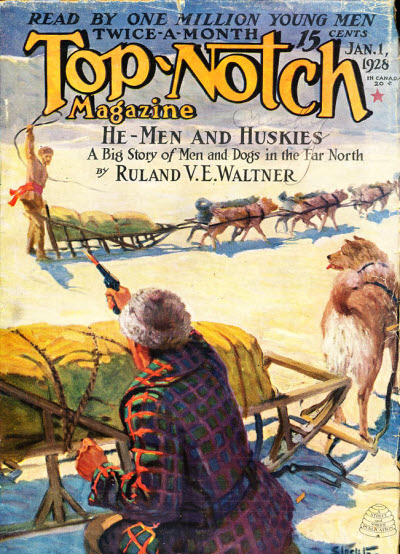
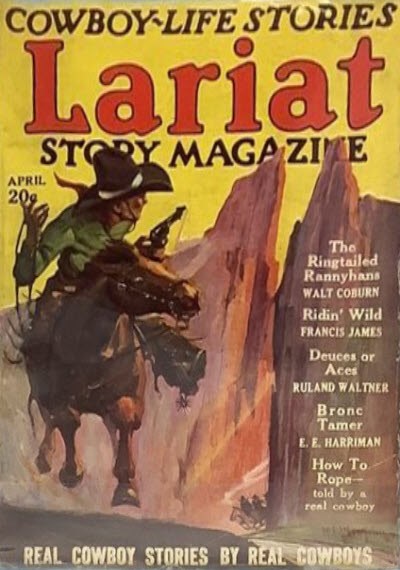
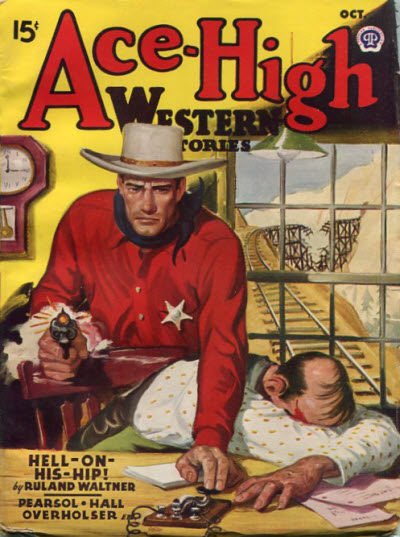
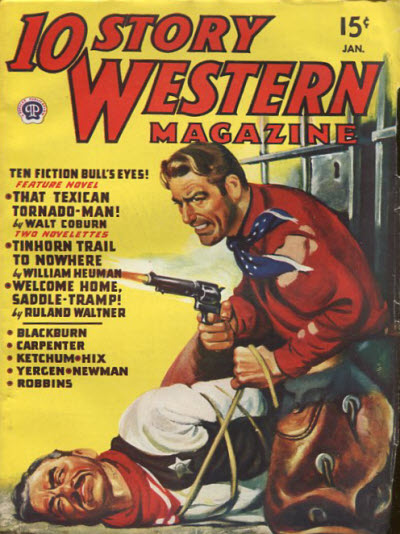
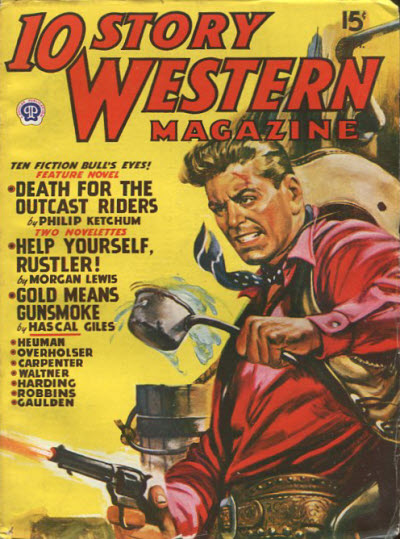
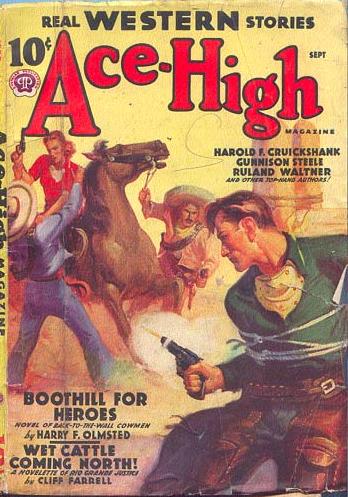
WASHINGTON — The editor of the old Blue Book magazine almost dropped his copy pencil when author Ruland Waltner walked in the door.
The Blue Book, after all, was a magazine “of men, for men and by men.”
And “Ruland Waltner” was not only a woman, he was two of them.
After that, the Waltner sisters. Vera and Erma, wrote no more for Blue Book.
“They’d bought five articles in a row from us, too,” said Vera.
“But then we decided to drop in for a visit,” explained Erma.
“That,” said Vera, “was a mistake.”
That was also some 15 years ago. The old Blue Book is no more, but the spinster sisters from Kansas City, Mo., are just getting their second wind.
They were here for Georgetown University’s fourth annual Writers Conference.Vera and Erma have been living and writing together for fun and profit since they got out of college.
“Ruland was our mother’s maiden name,” said Erma, explaining one nom de plume. “We’ve got other pen names, too.”
The first story they sold, about a race horse, was bought by Argosy Magazine. Since then, they’ve turned out hundreds of men’s adventure articles, children’s stories. “good westerns, full of action,” detective stories, short stories for slick magazines, and even a couple of True Confessions.
“We wrote about 50 stories a year when we were going good,” said Vera.
The pay has run as high as $1,000 an article, enough to keep bodies and souls together.The sisters talk out each others story ideas and then the one who got the brainstorm writes the rough draft, more conferences and it’s off to the publisher.
“Usually we agree on the final version,” said Erma.
But they don’t remember many of their own plots.
“We don’t live In the past,” said Vera with a smile. “Sometimes I’ll pick up a story we did long ago, read it and say: ‘Why Erma, this is really good’.”
After the Georgetown Conference, the sisters planned to go to New York City and buttonhole a few publishers. With the short story market drying up, they’re turning to novels.
“We’ve already done one that we haven’t sold.” said Erma. “It’s a crime story.”’
“Yes. we think it’s very funny,” said Vera. “It’s about two old maids.”
Other publishers weren’t bothered by it. Popular Publications, Munsey, Street & Smith and Butterick all featured stories from the Waltners starting in the 1920s, and continuing well into the 1940s.
That novel, though? Never got published, as far as I know. Their only book seems to be Adventures of the Seven Spartans, a Christian children’s book published in 1953 under their Lawrent Lee pseudonym.